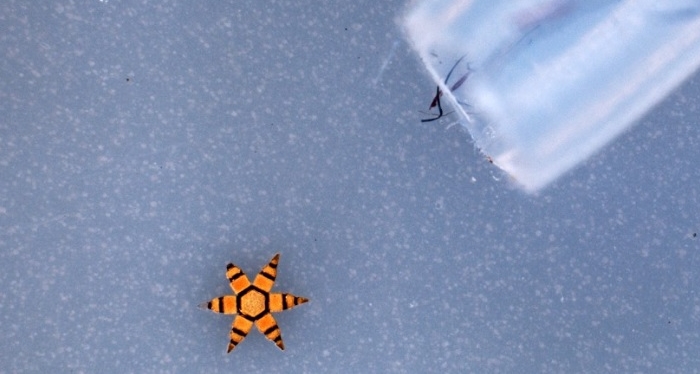Podcast: Play in new window

BOB HIRSHON (host):
Grabby little hands. I’m Bob Hirshon and this is Science Update.
A star-shaped little hand the size of a dust speck could one day travel through our bodies and grab a single tumor cell for a biopsy. The little grippers are the brainchild of Johns Hopkins biomolecular engineer David Gracias and his team.
DAVID GRACIAS (University of Illinois):
And these are made using the same processes used to make microchips, and they have tiny finger-like digits, we have shown that we can actually biopsy cells in the gastrointestinal tract of live animals.
HIRSHON:
Gracias described the technology at the AVS conference in Nashville. He says traditional biopsies can sample only a few areas of tissue, and can’t access some parts of the body. But microgrippers could be deployed anywhere by the hundreds to get many samples, giving them a better chance of making an accurate diagnosis. I’m Bob Hirshon, for AAAS, the science society.
Story by Bob Hirshon
